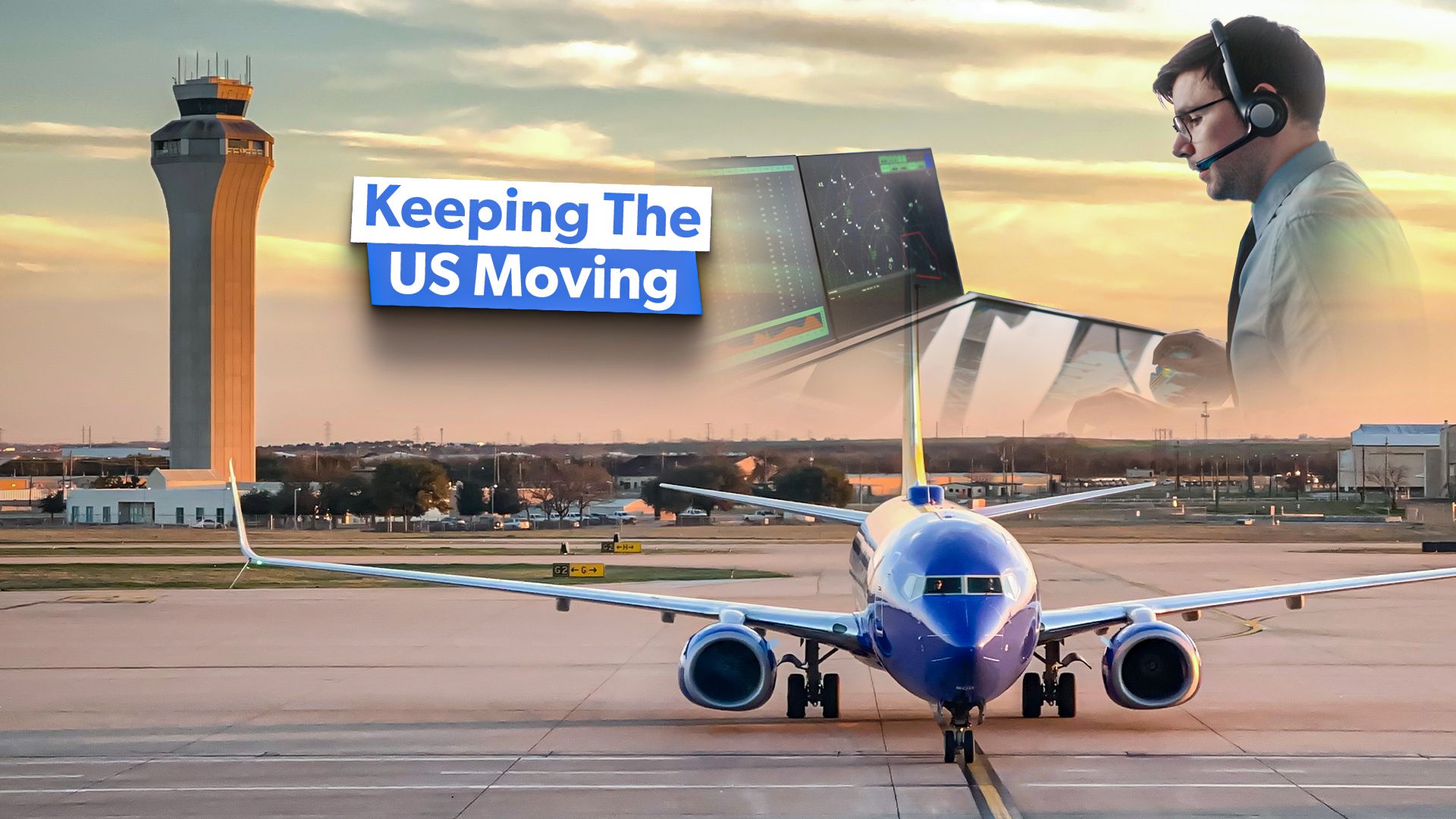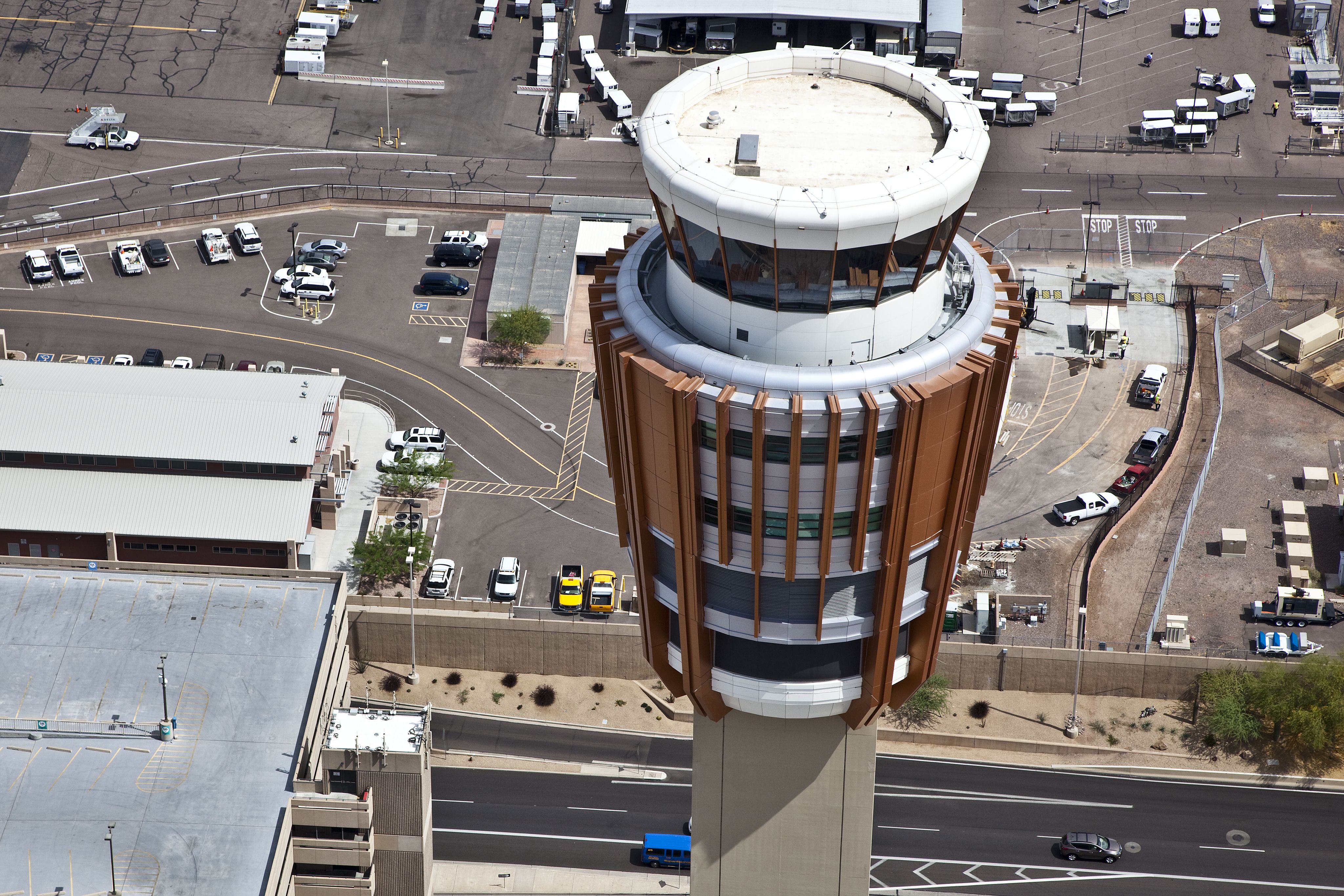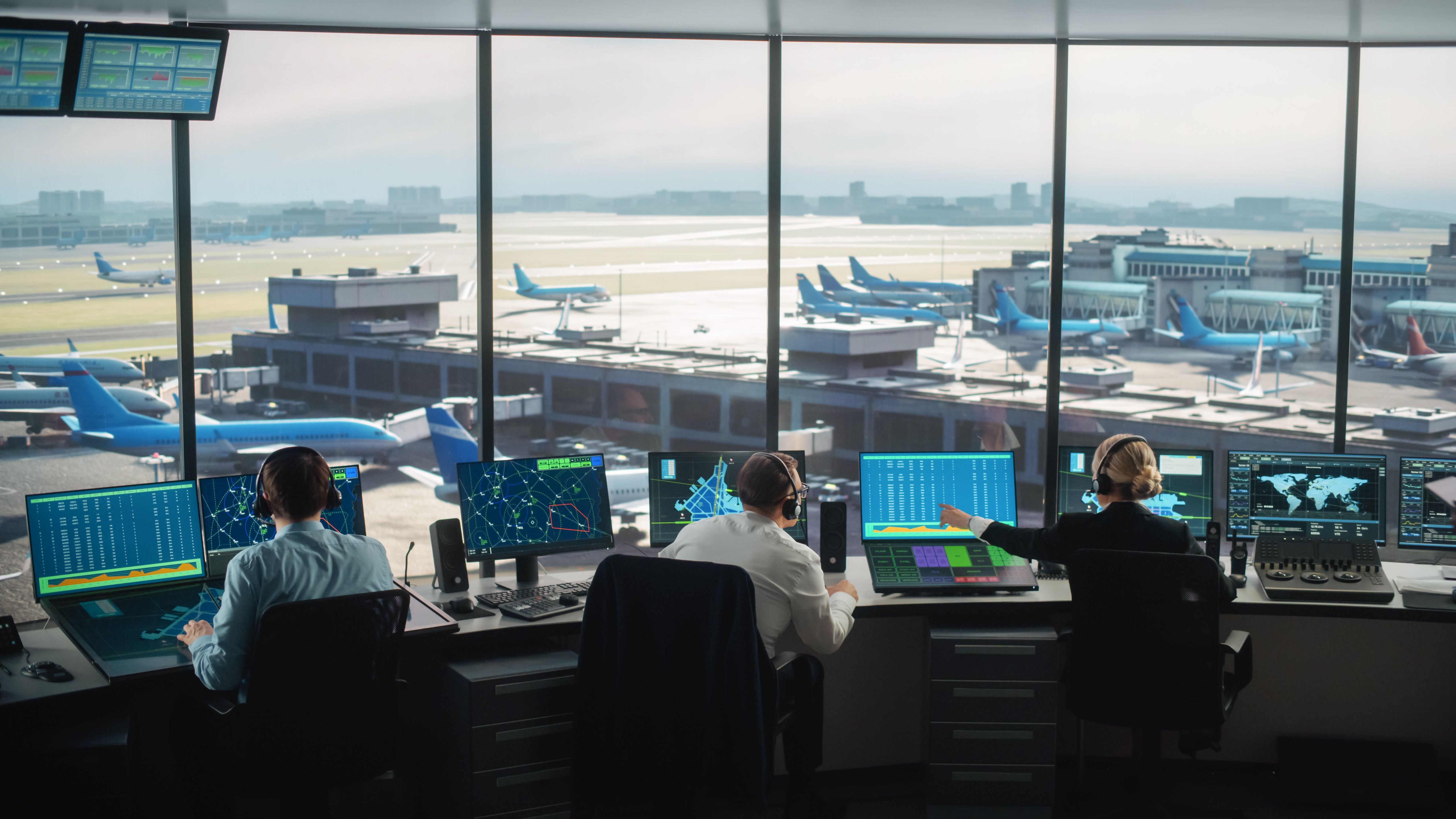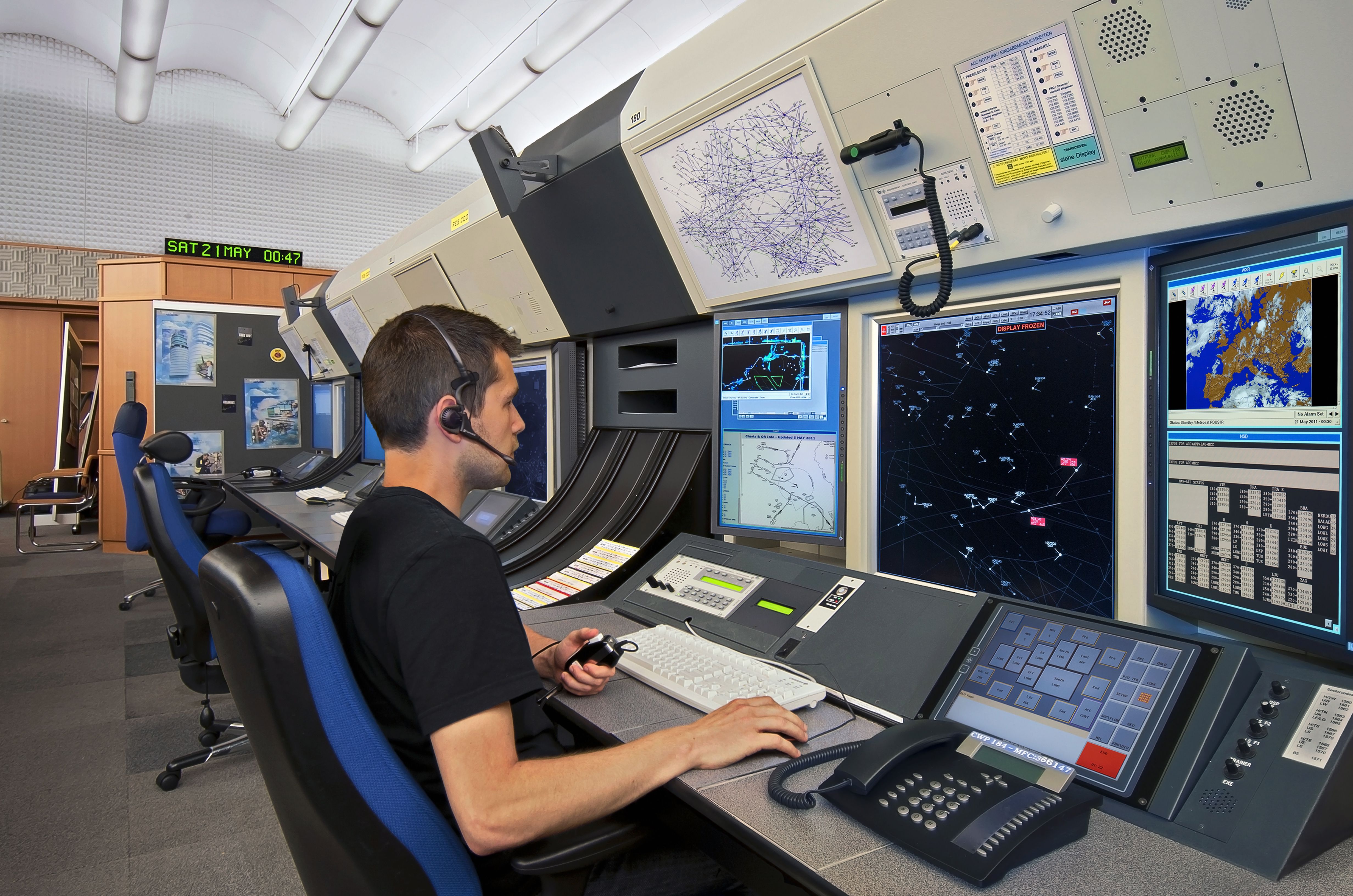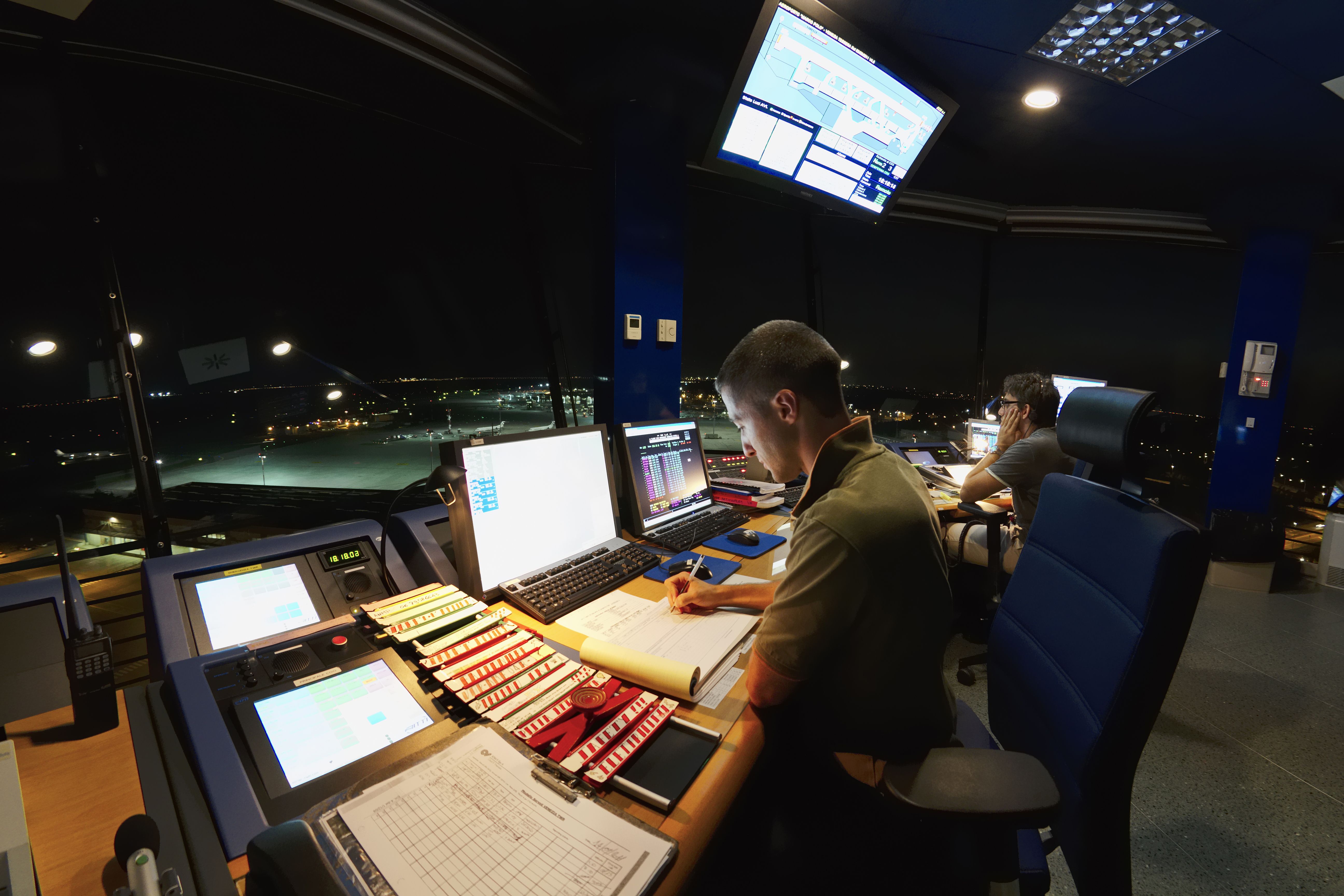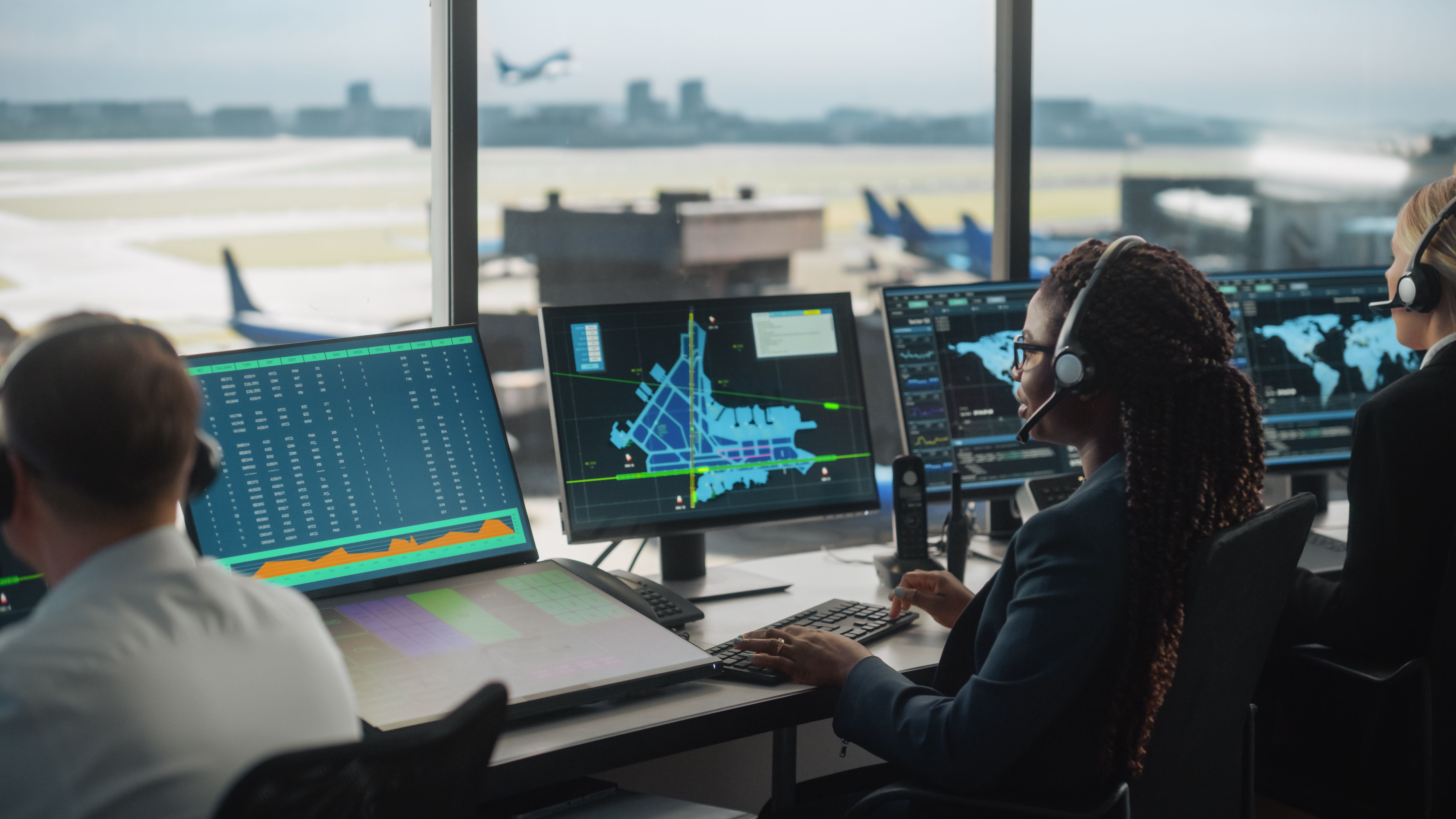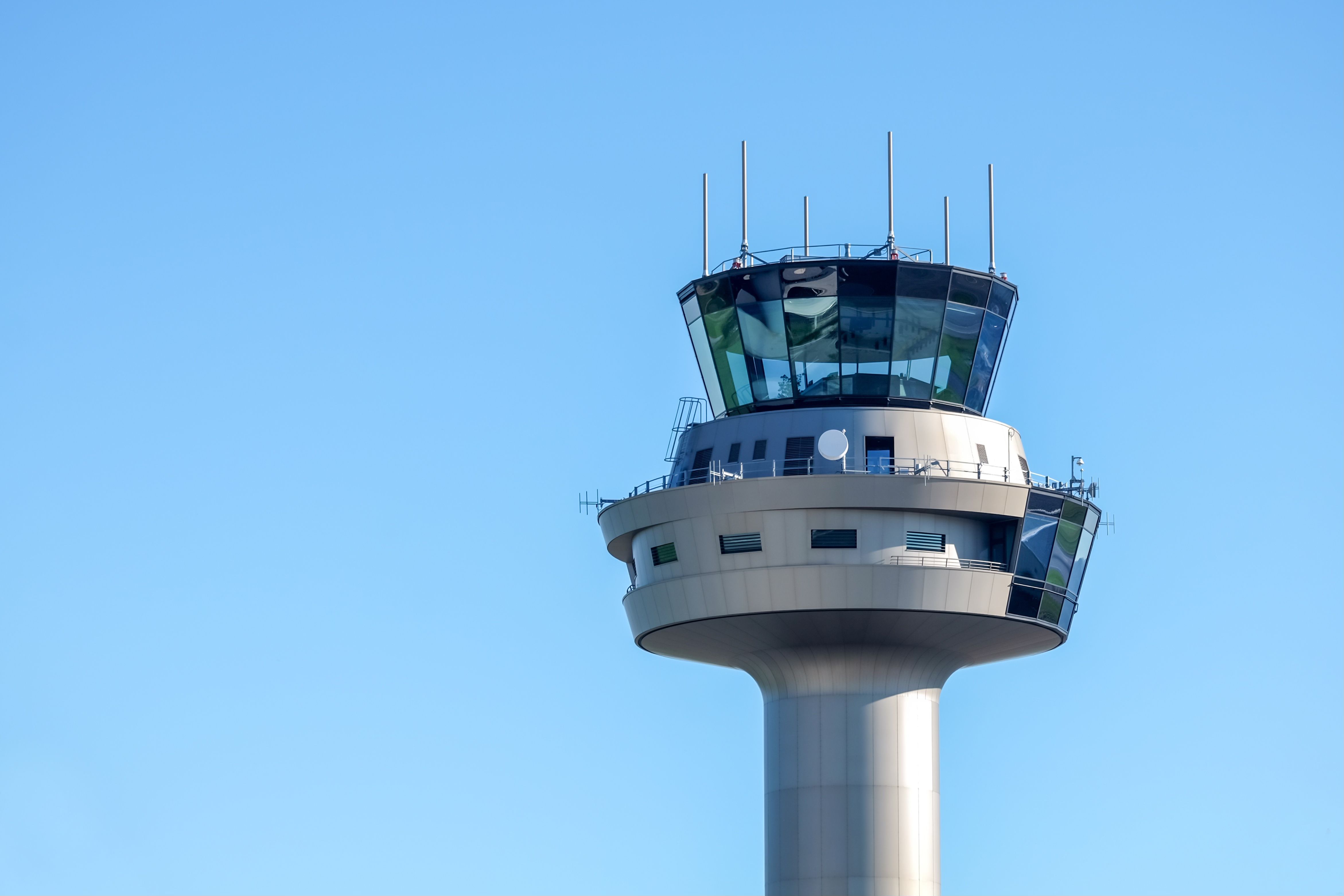Summary
- ATC enforces mandatory breaks every 90-120 min to combat fatigue and ensure safety.
- The FAA sets a maximum age limit of 30 for aspiring air traffic controllers.
- Air traffic controllers use a specialized language, radiotelephony, for clear communication.
- Air traffic controllers in the US must take mandatory breaks every 90 to 120 minutes.
Air traffic control (ATC) is a critical component of the aviation industry, ensuring that the thousands of flights crisscrossing the skies daily do so safely and efficiently. While most people know the primary responsibilities of air traffic controllers, several fascinating aspects of the job still need to be discovered. Here are five fun facts about air traffic control in the United States that shed light on this vital profession’s unique challenges and interesting quirks.
Photo: Tim Roberts Photography | Shutterstock
1
Mandatory breaks to combat fatigue
One break every 90 to 120 minutes
Air traffic control is a high-stress job, where split-second decisions can mean the difference between a smooth landing and a potential disaster. To maintain their sharpness and focus, air traffic controllers in the US must take mandatory breaks every 90 to 120 minutes. According to Aviation Week, these breaks are not just recommended; they are forced to help controllers stay refreshed and alert, reducing the risk of fatigue-related errors. This regulation underscores the demanding nature of the job and the emphasis on safety in the aviation industry.
Photo: Gorodenkoff I Shutterstock
This is what a normal day in the life of an air traffic controller could look like:
|
Time |
Activity |
Details |
|---|---|---|
|
08:00 AM |
Start of Shift |
Control began monitoring and managing air traffic. |
|
09:30 AM |
Break (30 minutes) |
First mandatory break after 90 minutes of work. The controller rests and refreshes. |
|
10:00 AM |
Resume Work |
The controller returns to duty. |
|
11:30 AM |
Break (30 minutes) |
Second, mandatory break after another 90 minutes of work. |
|
12:00 PM |
Resume Work |
The controller returns to duty. |
|
01:30 PM |
Lunch Break (60 minutes) |
Extended break for lunch, typically longer than other breaks. |
|
02:30 PM |
Resume Work |
The controller returns to duty. |
|
04:00 PM |
Break (30 minutes) |
Third mandatory break. |
|
04:30 PM |
Resume Work |
The controller returns to duty. |
|
06:00 PM |
End of Shift |
The controller’s shift ends after 8 hours of work, including breaks. |
2
The age limit for aspiring controllers
30 is the limit
According to Monroe Aerospace, becoming an air traffic controller is not just about having the right skills; it’s also about timing. The Federal Aviation Administration (FAA) has set a maximum age limit for those entering air traffic controller training: 30. This age cap exists because the training program is incredibly rigorous, requiring mental agility and physical stamina, which are more readily developed and sustained in younger candidates. This ensures that those who complete the training are well-prepared for the role’s challenges.
Photo: Burben | Shutterstock
What about other countries?
|
Country |
Minimum Age |
Maximum Age |
|---|---|---|
|
United States |
18 |
31 (must be hired before age 31) |
|
United Kingdom |
18 |
No maximum age (subject to medical and performance standards) |
|
Canada |
18 |
No maximum age (subject to medical and performance standards) |
|
Australia |
18 |
No maximum age (subject to medical and performance standards) |
|
Germany |
18 |
24-25 (recommended age limit for training entry) |
|
France |
18 |
27 (at the start of training) |
|
India |
21 |
27-30 (varies by entry route) |
|
Japan |
18 |
No maximum age (subject to medical and performance standards) |
|
South Africa |
18 |
35 (must begin training before age 35) |
|
New Zealand |
20 |
No maximum age (subject to medical and performance standards) |
|
Brazil |
18 |
35 (must be hired before age 35) |
3
Speaking a language of their own
They speak radiotelephony.
Air traffic controllers don’t just speak English—they say a specialized language known as radiotelephony. This jargon is essential for clear and concise communication between controllers and pilots, particularly in high-pressure situations. Terms like “wilco” (short for “will comply”) and “niner” (used instead of “nine” to avoid confusion with the German word “nein,” meaning “no”) are standard in the ATC lexicon. This unique language helps to minimize misunderstandings, ensuring that instructions are followed precisely.
|
Radiotelephony term |
English translation |
|---|---|
|
Affirm |
Yes |
|
Negative |
No |
|
Wilco |
Will comply |
|
Roger |
Received and understood |
|
Over |
My transmission is finished, awaiting response |
|
Out |
My transmission is finished, no response expected |
|
Souls |
Reference to ”people on board” |
|
Mayday |
Distress call |
|
Pan-Pan |
Urgency call |
|
Squawk |
Set your transponder code to … |
Photo: Angelo Giampiccolo I Shutterstock
4
The complexity of airspace management
45,000 daily flights are managed.
The US air traffic control system is one of the most complex in the world, managing over 45,000 flights daily. These flights are handled by a network of control towers, radar facilities, and en route centers, each with its specific role in guiding aircraft safely from takeoff to landing.
For example, once an aircraft leaves the terminal airspace, it is managed by en-route controllers, who may never actually see the aircraft they are guiding. These controllers rely on radar and other technology to track the plane’s progress and ensure it stays on its assigned route.
Photo: Gorodenkoff | Shutterstock
5
An industry in continuous evolution
4 airports were part of the trial for the new system.
The technology used in air traffic control has evolved significantly over the years, and it continues to do so. The US is currently working on implementing NextGen, a comprehensive overhaul of the national airspace system that aims to make air travel safer and more efficient. This new system will rely on satellite-based technology rather than traditional radar, allowing for more precise aircraft tracking.
This shift is expected to reduce delays, save fuel, and lower the environmental impact of aviation. However, the transition has been challenging, with issues such as funding and coordination between various stakeholders slowing progress.
Photo: Byjeng | Shutterstock
According to the Transportation Research Board, these were the trial airports for the NextGen air traffic control system:
- Dallas/Fort Worth International Airport (DFW): tested new procedures for efficient takeoffs and landings.
- Atlanta Hartsfield-Jackson International Airport (ATL): Served as a key location due to its status as the world’s busiest airport.
- Newark Liberty International Airport (EWR): Used to test the integration of NextGen technologies in congested airspace.
- Philadelphia International Airport (PHL): Participated in trials related to more precise flight paths.

